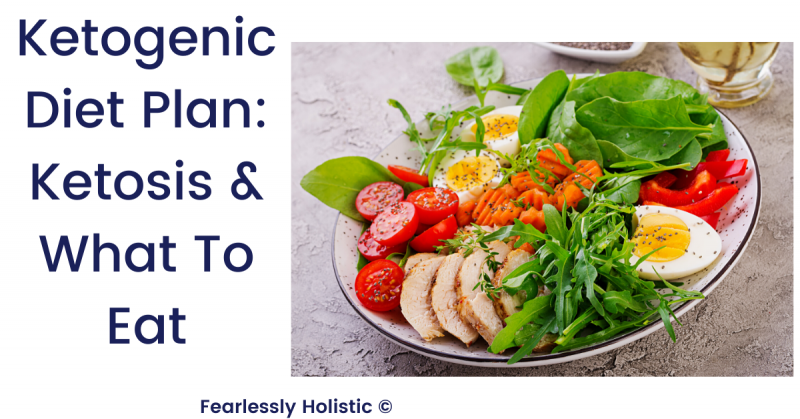Are you ready to try an easy ketogenic diet plan? Congratulations! A keto weight loss diet plan is aligned with eating clean whole foods, which is always the better choice!
There are exceptions, like the sweeteners and Keto processed foods, but you can skip eating those and stick to the real food if you like.
The keto diet is popular because of the focus on eating quality foods. The best keto diet plan is the one that is easy to stick to. Last week I wrote Keto Basics for Beginners: Why Keto Is So Great. Please read that post for more Keto information.
Hello and welcome to Fearlessly Holistic.
My name is Irma and I want to share my journey to improved health by eating whole foods, moving my body and eliminating stress as much as possible.
It is my hope to inspire you to make daily changes.
Why? Because eating fresh, seasonal food and getting some sunshine is the best way to increase longevity. But you do not want just a long life.
You want a quality long life.
If you’re ready to up your keto game, try Ketovore which is more meat and fat with less plant foods. It’s helpful for discovering your food allergies/intolerances.
My blog posts are my opinion and the results of things that I have tried that either worked for me or didn’t. My opinions are for informational purposes only and are not intended as medical advice. Medical advice should always be obtained from a qualified medical professional for any health conditions or symptoms associated with them. As well, there may be affiliate links in this post. Read more here.
What Is Ketosis? Is It Dangerous?
Not at all. Many people confuse ketosis with the very serious ketoacidosis, and they are not the same.
Ketosis is a natural process for your body. As your body fluctuates throughout the day, it can be in and out of ketosis at different times.
With the ketogenic diet, the purpose is to achieve and maintain a state of ketosis, using body for fuel.
Let’s look at the difference.
Ketosis vs. Ketoacidosis
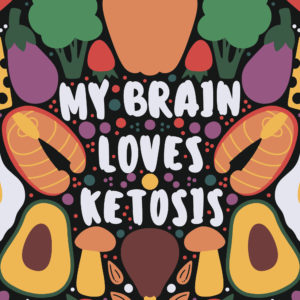
Despite the similarity in name, ketosis and ketoacidosis are two different things. And because of the similarity in the name, it can be easy to confuse the two.
What is Ketosis?
Ketosis, is a metabolic state where most of the body’s energy comes from ketone bodies in the blood. Ketone bodies are molecules that occur when your body burns fat as an energy source.
You can be in ketosis if you’re on a low-carbohydrate diet or fasting, or if you’ve consumed too much alcohol.
If you are in ketosis, you have a higher than usual level of ketones in your blood or urine, but not high enough to cause acidosis.
Ketosis is a process that the body does every day, regardless of the number of carbs you eat.
Your body processes different types of nutrients into the fuels that it needs. Proteins, fats, and carbs are all processed for use.
The ketogenic diet, a low carb, high fat diet, ramps up this process.
Symptoms when you are in ketosis:
- Bad Breath: Bad breath is a common side effect due to elevated ketone levels. The culprit is acetone. Sugar-free gum or mints can be used to solve the issue. And rest assured, it is not a permanent thing, it will go away.
- Weight Loss: Fast weight loss can occur during the first week.
- Increased Ketones in the Blood: Reduction in blood sugar levels and an increase in ketones
- Appetite Suppression: Many people report decreased hunger while following a ketogenic diet.
- Increased Focus and Energy: Eliminating carbs can help control and stabilize blood sugar levels. This may further increase focus and improve brain function.
- Short-Term Fatigue: Initially, you may suffer from tiredness and low energy. This will pass once your body becomes adapted to running on fat and ketones.
- Short-Term Decreases in Performance: Short-term decreases in performance can occur. However, they tend to improve again after the initial adaptation phase is over.
- Digestive Issues: You might experience digestive issues such as constipation when you first switch to a ketogenic diet.
- Insomnia: Many people report insomnia or waking up at night when they first reduce their carbs drastically. However, this usually improves in a matter of weeks.
What is Ketoacidosis?
Ketoacidosis refers to diabetic ketoacidosis (DKA) and is a complication of type 1 diabetes mellitus, where an individual with uncontrolled diabetes is starving due to the lack of insulin.
Insulin brings glucose into the cells and without it the body switches to ketones; the brain can function with the energy from glucose, fat, or ketones.
Ketoacidosis can be caused by not getting enough insulin, having a severe infection or other illness, becoming severely dehydrated, or some combination of these things.
Symptoms of ketoacidosis:
- Flushed, hot, dry skin.
- Blurred vision.
- Feeling thirsty and urinating a lot.
- Drowsiness or difficulty waking up. Young children may lack interest in their normal activities.
- Rapid, deep breathing.
- A strong, fruity breath odor.
- Loss of appetite, belly pain, and vomiting.
The symptoms are very different and make it easy to see why achieving and maintaining ketosis is not dangerous.
And because the symptoms are so different it is easy to determine when you are in ketosis.
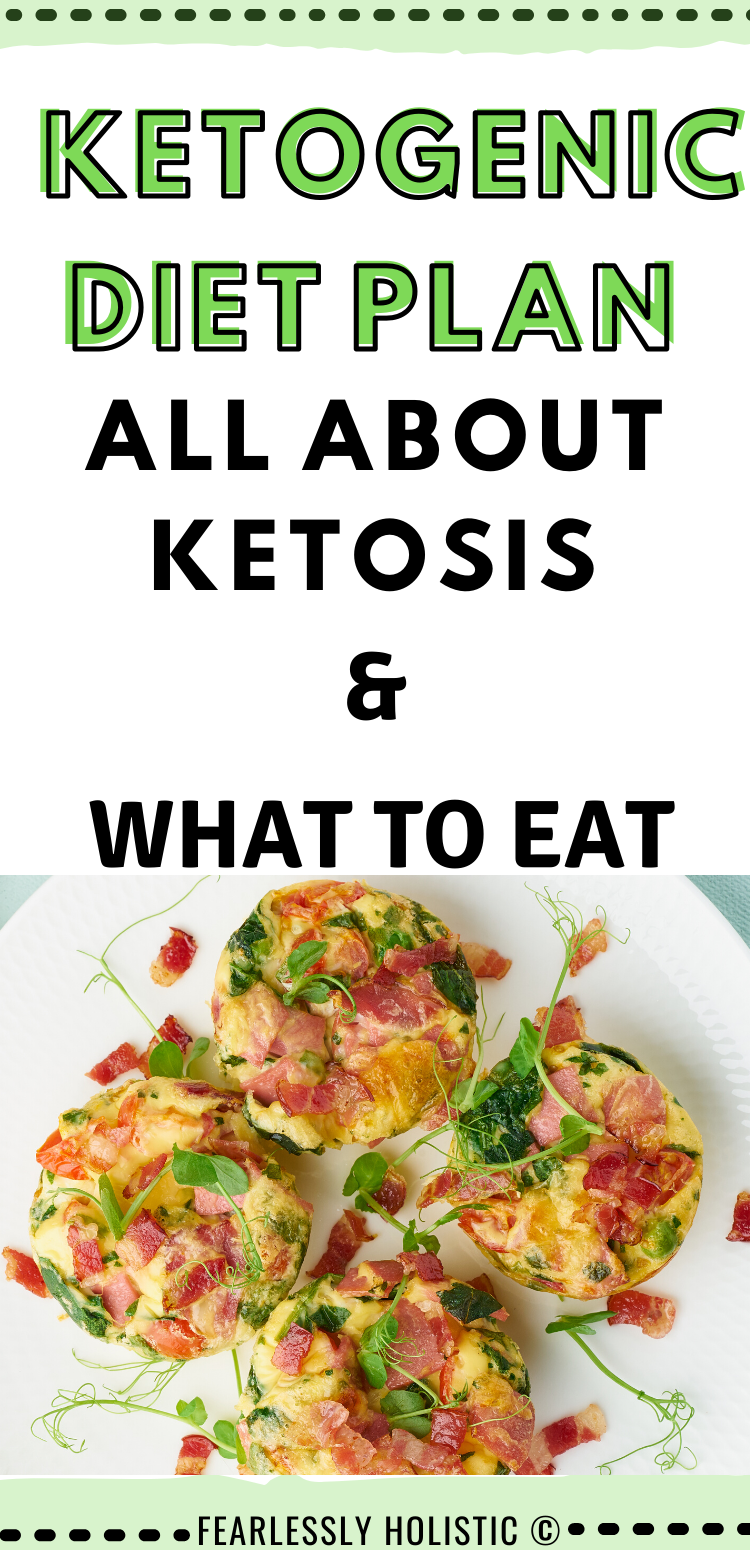
How Do I Know I’m In Ketosis?
The first clue that I notice about being in ketosis is my lack of appetite. I can go much longer between meals…and I love it! And even when I am hungry, it’s not the growling tummy and nausea feeling.
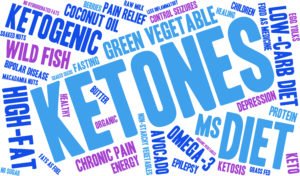
Instead, it’s like my body gives me subtle hints that I should consider eating, like my body is more polite about the hunger lol.
I digress…There are some naturally occurring physical symptoms that you can use to tell that you are in ketosis because you will feel different.
Remember, your body is depending on fat for fuel.
This includes dietary fats like oils and fatty meats, but it also includes the extra fat you are carrying on your body. You will feel the loss of some of this fat, whether it is around the belly or on the thighs.
You will notice a decrease in your appetite.
As ketones are created and used for energy, there is no more craving for sugary foods or foods you used to eat.
No more cravings mean that you are not as hungry. That means you will not be eating as much or want to eat as much as you did before starting the diet.
Your mental clarity will improve.
An unbalanced diet can lead to lack of mental clarity, and it feels like a foggy brain. You have difficulty remembering facts or struggle with staying focused on tasks.
When you are in ketosis, your brain is receiving energy through the ketones using fat as energy. You will find that you are able to think much more clearly, you will remember facts and details much better.
You Can Test For Ketosis
If you want real accuracy, you can measure the ketones in your body by detecting them in your urine or in your blood.
Urine Strips and Ketone Meter
First, the urine.
The way to do this is to use ketone urine testing strips, often referred to by the brand name Ketostix. They are inexpensive and very easy to use.
Simply pass one directly through your urine stream, shake off any excess fluid and wait 15 seconds.
If you are in ketosis, the strip will change color from beige to varying shades of purple. There will be a color guide provided so you can measure your ketone levels accurately.
Second, the blood test.
This is a truly accurate way to measure if you are in ketosis. And this is something you can do and it can be done in your home. You will need a blood ketone meter and a kit that includes the lancet pen and ketone test strips.
Two brands that are used by many people are:
Precision Xtra: This meter from Abbott Diabetes Care can store up to 450 measurements and will display your blood glucose averages over different time periods. You need to enter a code to switch from glucose testing to ketone testing.
Nova Max Plus: This meter from Nova Biomedical is often provided free with the purchase of two boxes of test strips.
You don’t have to enter a code to switch it from blood glucose to ketone testing; it does that automatically when you insert a ketone test strip.
A Keto Diet Plan Includes The Keto Flu
Whenever we begin a new diet or habit we can expect some “growing pains”. The keto diet is no exception.
Keto flu is a real thing. It can happen when you drastically and suddenly remove carbs from your diet.
Most people will experience some of the symptoms, and some people can experience most of the symptoms.
Either way, you need to know about it so you can prepare yourself for it.
Also known as the ‘carb flu,’ the keto flu is a natural reaction your body experiences when switching from burning glucose (sugar) as energy to burning fat (ketone bodies) instead.
The symptoms of keto flu are:
- Intense cravings for carbohydrate and sugar
- Fatigue
- Light-headedness
- Headache
- Dizziness
- Body aches
- Dry mouth
- Nausea
- Irritableness
No need to be alarmed. These symptoms are a natural reaction to removing carbs from your diet.
If you are experiencing them then it means you are doing the diet right.
Most people do not experience all of the symptoms, only some. And, they will pass in less than a week.
Manage the Symptoms
If you know the symptoms are possible, you can prepare yourself and your kitchen cabinet and pantry to manage them.
- Take an electrolyte supplement to replace the salt that has been removed through increased water intake and reduced carbs.
- Hydrate with water, drink when thirsty, and adding a bit of salt will help
- Drink bone broth because it contains a good amount of water, fat, and salt
- Eat more fat by increasing your use of oil in cooking
- Gentle exercise such as walking or yoga.
- Sleep better. Take an Epsom salt bath: soaking in a warm Epsom salt bath can help soothe and relax your muscles and improve electrolyte
- Take an exogenous ketone supplement. Exogenous ketones help fight fatigue and boost energy levels by raising the ketone levels in your blood.
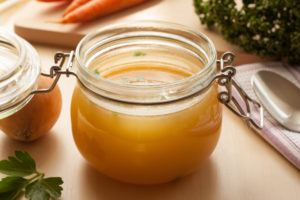
Be prepared for the symptoms and make a plan to reduce them so that you only experience them for a few days.
Being prepared will help you focus on the end goal, which is to lose weight.
It will also help you be mindful that at the beginning of anything new, there will be a few days of discomfort. If you are prepared for that, you will view the discomfort as simply part of the process.
What Are “Net” Carbs?
On any low-carb diet, you will be reducing your net carb gram intake. It is important that you understand how to actually count net carbs.
Net carbs are simply the grams of total carbohydrates in a portion of food minus its grams of fiber.
Because fiber is a carbohydrate that your body cannot digest, it does not raise your blood sugar levels or trigger an insulin response.
Foods that are low in net carbs do not have a significant impact on blood sugar.
This includes nutrient-dense vegetables and fruits, which are less likely to interfere with weight loss.
Here are a few zero- and low-carb foods to help you get started on understanding why they are often listed as acceptable foods in low-carb diets:
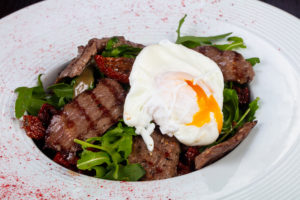
Examples of Zero Carbs
- Beef
- Lamb
- Chicken
- Pork
- Bacon (but avoid the bacon cured in sugar)
- Salmon
- Trout
Examples of Keto-friendly Vegetables
- Broccoli – 6 grams of carbs per cup or 7 grams of carbs per 100 grams.
- Tomatoes – 7 grams in a large tomato, or 4 grams per 100 grams.
- Onions – 11 grams per cup or 9 grams per 100 grams.
- Brussels Sprouts – 6 grams per half cup, or 7 grams per 100 grams.
- Cauliflower – 5 grams per cup and 5 grams per 100 grams.
- Kale – 7 grams per cup or 10 grams per 100 grams.
- Cucumber – 2 grams per half cup or 4 grams per 100 grams.
Examples of Keto-friendly Fruits
Be careful, as you can see fruits are higher in carbs than vegetables due to their sugar content.
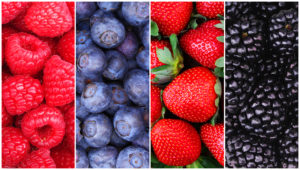
Whenever possible, eat fresh, local seasonal fruits and veggies, for better nutrition.
- Strawberries – 11 grams per cup or 8 grams per 100 grams.
- Apricots – 8 grams in 2 apricots, or 11 grams per 100 grams.
- Avocado – 13 grams per cup or 8.5 grams per 100 grams.
- Grapefruit – 13 grams in a half grapefruit, or 11 grams per 100 grams.
You can calculate, for yourself, the approximate number of net carb grams in a low-carb product.
First look at the information on the food label:
Total Carbohydrates
– Dietary Fiber
– Sugar alcohol
= Net carbs
Often, the food label will break down carbohydrates into total carbohydrates, fiber, and sugars.
Total carbohydrates
This total combines all of the carbs within the food item and includes the fiber, sugars, starches, sugar alcohols and glycerin.
The label will show the amount found per serving and is measured in grams.
Total carbohydrates are found in starches, vegetables, fruits, sweets, and milk.
Dietary fiber
The amount of indigestible or partially digestible bulk from plant foods like fruits, vegetables, whole grains, oats, nuts and seeds and is measured in grams.
Sugar alcohols
You will find sugar alcohols in foods labeled “sugar-free,” including candy, cookies, chewing gums, and soda. They have recently become popular in packaged health foods.
Sugar alcohol gets its name from its molecular structure, which is a hybrid between a sugar molecule and an alcohol molecule.
Biochemically speaking, sugar alcohols are structurally similar to sugar.
However, they are either poorly digested or poorly metabolized. Sugar alcohols can cause gastrointestinal distress in people who are sensitive to it.
Sugar alcohol is popular as a sugar replacement in foods.
This is because they contain few calories, have a minimal impact on insulin levels, and are safe for those with diabetes
Here’s a list of some popular sugar alcohols so you can identify them when you look at a nutrition label:
- Erythritol
- Maltitol
- Hydrogenated starch hydrolysates
- Isomalt
- Lactitol
- Mannitol
- Sorbitol
- Xylitol – You will see this ingredient in some sugar free gum. Xylitol has been shown to prevent tooth decay in some studies.
It can be confusing, at first, when trying to calculate net carbs on your own, but now that you have the basic information you can practice it at home first. Soon you will be confident in your ability to count net carbs during your next trip to the grocery store.
The Best Keto Diet Plan Menu
As I mentioned earlier, the best keto diet plan is one that you can stick to. This is made easier by the awesome foods that you can eat.
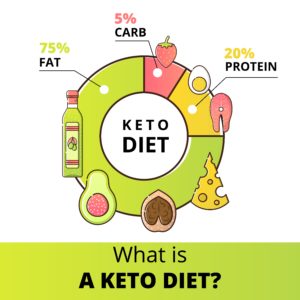
The key to an easy keto diet plan is to build ketones.
Once you are in ketosis, you will see that it is the best keto diet plan.
The key to building ketones is a mixture of fasting and a diet with at least 65% of your food intake being from fat.
Related Post: How To Do An Intermittent Fasting Diet Plan
This leaves you with about 30% proteins and the last 5% can be an additional 5% of fat or 5% of dark green low carb vegetables like spring mix salad greens, kale, spinach, Swiss chard, etc.
Consider grabbing a nutrition app, like Cron-o-Meter, to track your macros (fat, protein, carbs) the first couple of months. This makes it easier to tweak the diet for your own needs.
The diet has a strict 5% carbohydrate allowance.
In general, you can eat from the following food groups: Fats and Oils, Protein, Vegetables and Fruits, Dairy products, Nuts and Seeds, Water and Beverages.
Whenever possible, purchase the best quality foods available to you. Produce that is in season is cheaper and more nutritious. This gives you more health benefits.
This ketogenic diet food list should help you be able to make decisions about what you are eating and shopping for.
Fats and Oils
Try to get your fat from natural sources like meat and nuts. Supplement with saturated and monounsaturated fats like coconut oil, butter, and olive oil. Here are some to choose from:
- Fatty Fish
- Animal Fat (non-hydrogenated. And beware of added products, like “stabilizers”)
- Lard
- Tallow
- Avocados
- Egg Yolks
- Macadamia/Brazil Nuts
- Butter/Ghee
- Coconut Butter
- Cocoa Butter
- Olive Oil
- Coconut Oil
- Avocado Oil
- Macadamia Oil
- MCT Oil
Related Post: 24 Healthy Fat Foods

Protein Choices
Avoid farmed fish. The quality is poor from the poor diet they are fed. As well farmed fish may have parasites that wild fish, swimming in deep, cold waters, do not get.
Remember to choose the best quality that you can afford. Go for grass-fed or pastured animals that have been treated humanely. FYI: The best quality shrimp and prawns come from Argentina.
Avoid seafood, or any food, from China. Their production practices are not high standard.
Choose from the following:
- Fish. Anything that is caught wild like catfish, cod, flounder, halibut, mackerel, mahi-mahi, salmon, snapper, trout, and tuna. Fattier fish is better.
- Shellfish. Clams, oysters, lobster, crab, scallops, mussels, and squid.
- Whole Eggs. You can prepare them in many different ways like fried, deviled, boiled, poached, and scrambled.
- Beef, steak, roasts, ground, and stew meat. Stick with fattier cuts where possible.
- Pork. Ground pork, pork loin, pork chops, tenderloin, and ham. Watch out for added sugars and try to stick with fattier cuts.
- Poultry. Chicken, duck, quail, pheasant and other wild game.
- Offal/Organ.Heart, liver, kidney, and tongue. Offal is one of the best sources of vitamins/nutrients.
- Other Meat. Veal, Goat, Lamb, Turkey and other wild game. Stick with fattier cuts where possible.
- Bacon and Sausage. Check labels for anything cured in sugar, or if it contains extra fillers. Don’t be overly concerned with nitrates.
- Nut Butter. Go for natural, unsweetened nuts
Vegetables and Fruits
- Nightshades: Tomato, eggplant, and peppers.
- Root Vegetables: Onion, parsnip, garlic, mushrooms, and squash.
- Berries: Raspberries, blackberries, Strawberries, and blueberries.
- Citrus: This includes lemon, lime, and orange juice (or zest) in water and in recipes.
Completely avoid: starchy vegetables and large fruits like potatoes and bananas.
Dairy products
- Greek yogurt (plain/unsweetened). Purchase brands with the minimum of ingredients and including live bacterial cultures to feed your gut.
- Heavy whipping cream (35% milk fat or higher)
- Mayonnaise – preferably homemade. Get the cleanest that you can find, like Chosen Foods Avocado mayonnaise.
- Fresh dairy items including cottage cheese, cream cheese, sour cream, mascarpone, crème fraiche, etc.
- Soft Cheese including mozzarella, brie, blue, Colby, Monterey jack, etc.
- Hard Cheese including aged cheddar, parmesan, asiago, feta, Swiss, etc.
Nuts and Seeds
Fatty, low carbohydrate nuts. Macadamia nuts, brazil nuts, and pecans can be consumed with meals to supplement fat.
Fatty, moderate carbohydrate nuts. Walnuts, almonds, hazelnuts, peanuts, and pine nuts can be used in moderation to supplement for texture or flavor.
Higher carbohydrate nuts. Pistachios and cashews should rarely be eaten or avoided as they’re very high in carbohydrates
Water and Beverages
This will be your staple, go-to source for hydration. You can drink tap, bottled or sparkling water.

Bone Broth: Loaded with vitamins and nutrients. More importantly, it will kick start your energy by replenishing your electrolytes.
Coffee: Improves mental focus and has some added weight loss benefits. Try Bulletproof coffee.
Tea: Has the same effect as coffee. Try to stick with black or green.
Coconut/Almond milk.You can use the unsweetened versions in the carton from the store to replace your favorite dairy beverage.
Diet soda.Try to severely reduce or completely stop drinking this. It can lead to sugar cravings and sometimes insulin spikes in the long run.
Flavoring: The small packets that are flavored with sucralose or stevia are fine. You can alternatively add a squeeze of lemon, lime, or orange to your water bottle.
Alcohol: Choose hard liquor. More beer and wine will be too high carb to consume.
*Note* Frequent consumption of alcohol will slow weight loss down, as your liver must process alcohol first.
You will have some water weight loss because alcohol is dehydrating. However you gain the weight back almost immediately after the alcohol has been processed.
Foods to Avoid
If you are not sure about any products or food items that might not be keto friendly, here is a list of things that you should avoid:
Sugar. It’s typically found in soda, juice, sports drinks, candy, chocolate, and ice cream. Avoid sugar at all costs.
Related Post: Break Sugar Addiction with A Detox Plan
Grains. Any wheat products, pasta, cereal, cakes, pastries, rice, corn, and beer should be avoided. This includes whole grains like wheat, rye, barley, buckwheat, and quinoa.
Starch. Avoid vegetables like potatoes and yams and other things like oats, muesli, etc. Some root vegetables are okay in moderation – be sure to read the section on vegetables.
Trans Fats. Margarine or any other spreadable replacement butter should be avoided as they contain hydrogenated fats.
Fruit. Avoid any large fruits such as apples, oranges, bananas as they’re extremely high in sugar. Some berries can be consumed in moderation – be sure to read the section on fruits.
Low-fat foods. These tend to be much higher in carbs and sugar than full-fat versions. Make sure you read the package.
Keto Diet Plan Menu Examples

Breakfast: 2 whole eggs cooked any way (use butter for frying). Sausage containing no carbs or sugar and/or bacon.
Lunch: Chicken with skin. Steamed spinach or broccoli.
Supper: Steak. Fried mushrooms and onions. Leafy green salad.
Before bed 1 glass of wine with a slice of cheese.
Or
Breakfast: Bulletproof coffee. Faux bulletproof coffee is coffee with heavy cream and regular butter or coconut oil.
Lunch: A pan-fried pork chop. Leafy green salad.
Supper: Hamburger made with high-fat ground meat (beef; beef & pork combo; chicken; or turkey). The meat can contain chopped onions, and garlic if you like, but absolutely no syrup or sugar.
Add cheese, tomatoes, lettuce and any other leafy low-carb greens you like.
Before bed 1 glass of wine with a slice of cheese.
Conclusion
It might be strange to eat large cuts of beef or to fry eggs in butter, but trust me, this how we should be eating. When you see a steak with a nice green salad, how could that not be appealing to the eye?
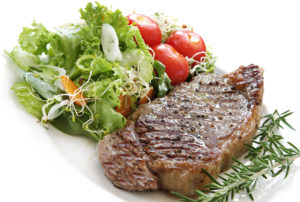
That is not the reaction you will have to a bowl of rice.
You can thank Ancel Keys for trying to deprive us of the building blocks of excellent health, by pushing his agenda that red meat and saturated fat cause heart disease. In 60 years, no one has been able to prove a connection. Not one.
Any studies that show a correlation do not take into account: (1) Other factors, like smoking or a sedentary lifestyle, (b) That most people who do food surveys do not remember everything that they eat, and (c) They do not consider a high carb diet of processed foods to be a factor.
But you will find plenty of people who have cured their health problems by eating tasty, non-processed foods like meat and vegetables. Who knew? Only our instincts.
Holistic approaches never just address symptoms of specific health problems, but instead aim to return or keep the patient in a state of balanced health between mind, body, and spirit. Combining IF with Keto or Ketovore creates harmony for your health.
Holism targets overall wellness, and when we are well, we only get better with age.
Please share this post with anyone who can benefit from it. Sharing is caring!
And follow me on Pinterest!
Until next time, here’s to our health!
-Irma

